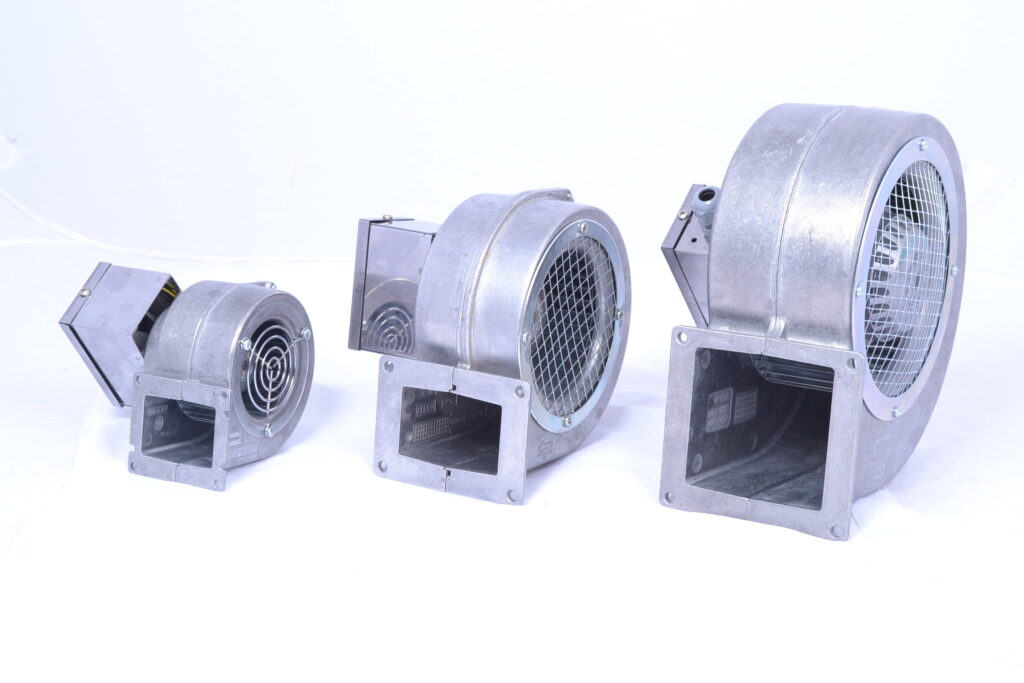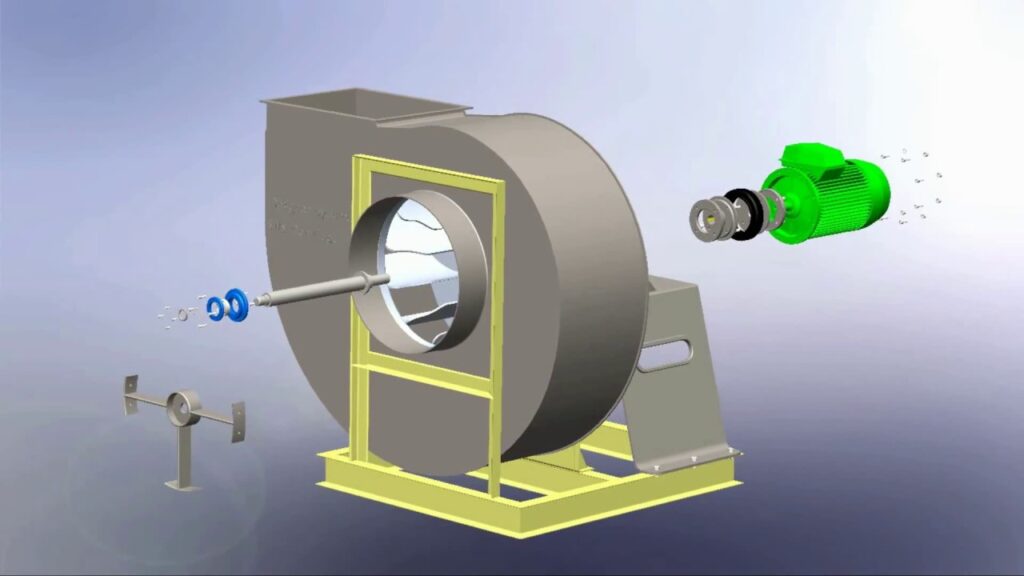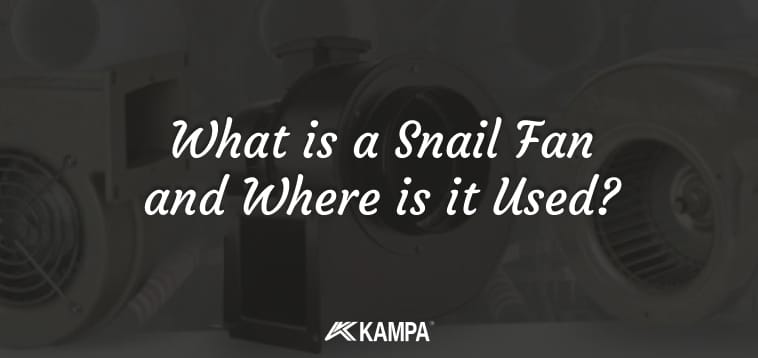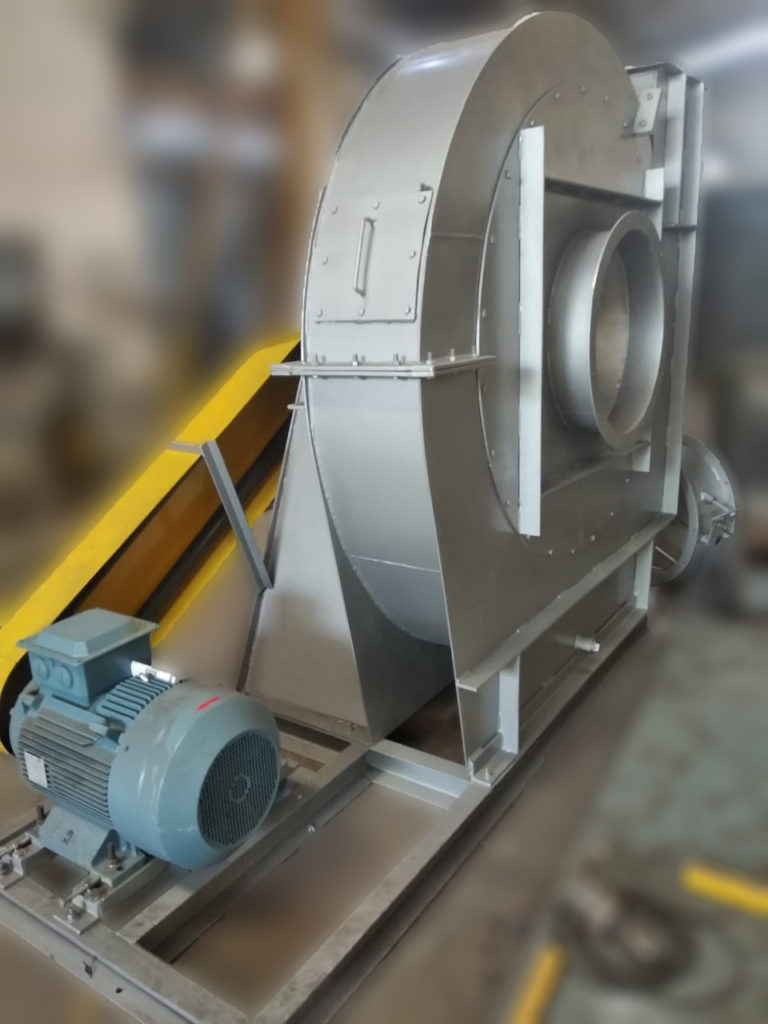What is a Snail Fan and Where is it Used?
Snail fan is one of the most important parts of ventilation systems. It has advantages such as high performance, quiet operation, robustness and ease of installation.
Table of Contents
Ventilation systems are technological products that are needed in many areas and are important for creating a healthy environment. Ventilation systems clean the air in the environment, provide fresh air, maintain humidity and temperature balance, eliminate bad odors, and remove dust and particles.

Fans are one of the most important parts of ventilation systems. Fans are devices that suck or blow air and deliver it to the ventilation ducts. Fans can be of various types and features. In this article, we will try to answer the questions of what a snail fan is and where it is used.
Snail Fan or Normal Fan?
There are some differences between a snail type fan and a normal fan. A snail fan is a type of fan that draws air at high power thanks to its air motor and its appearance resembles a snail. A normal fan is a fan that sucks or blows air, with or without blades, in various shapes and sizes.
The differences are as follows:
- It sucks or blows air in a spiral, while a normal fan sucks or blows air directly.
- It provides higher flow and pressure, whereas a normal fan provides lower flow and pressure.
- It runs quieter and does not vibrate, whereas a normal fan runs louder and may vibrate.
- It is more robust and durable, whereas a normal fan is more delicate and fragile.
- It is mostly used in industrial areas, while the normal fan is mostly used in domestic areas.
The answer to the question of whether a snail fan or a normal fan cools better depends on the size of the area to be used, ventilation needs, energy consumption, noise level and ease of installation. In general, a snail fan provides better cooling performance, but a normal fan can be more economical and practical.
Snail type fan is a type of fan that draws air at high power thanks to the snail air motor and its appearance resembles a snail. It is a ventilation unit to which flexible, square-sectioned and circular-sectioned air ducts used for blowing fresh air or evacuating the air inside are connected. The blades are manufactured as dense and backward inclined. They can be used easily in industrial applications.

Types According to Area of Use
They are divided into three groups: low pressure, medium pressure and high pressure.
Low Pressure
Low-pressure snail type fans are fan systems that are useful in ambient ventilation, especially in combination with smoke.
They are manufactured for the transportation of particles, dust, sawdust, lint and waste air from one area to another. Such fans are generally used in heavy industries. In furnaces, paint ovens and textile industry, this ventilation system is a very important need.
Medium Pressure
Medium pressure snail fans are fan systems that provide higher flow and pressure. These types of fans are mostly used in industrial areas. Medium pressure snail type fans are preferred in places such as chemical plants, metal processing plants, paper mills.
Medium pressure snail type fan is also widely used in dust collection systems. With its dust absorbing feature, it cleans dusty environments in large enterprises and factories.

High Pressure
High pressure snail fans are the most powerful ventilation fans. Such fans can transport air over long distances, providing very high flow and pressure.
High-pressure snail fans are generally used in power plants, power generation facilities, mines, etc. They also serve as transportation with push and pull force.
What are the Advantages of Snail Fans?
The biggest advantage of snail fans is their high performance. They have very powerful motors and suck or blow air quickly.
They work quietly and do not vibrate. This reduces ambient noise pollution and increases comfort. Robust steel and specially manufactured rotors determine the quality of the system.
Snail fans can be easily installed in areas such as walls, floors or ceilings. They are easy to maintain and long-lasting devices.

What Should We Consider When Choosing a Snail Fan?
When choosing a snail fan, we should consider factors such as the size of the area to be used, ventilation needs, flow and pressure values, energy consumption, sound level, ease of installation.
We should also pay attention to issues such as the quality, warranty and service of the snail fan. Our preferences should be made by considering the difference in continuity and durability. Reliability should always be a consideration as human health should always be taken into account.
Why does its appearance resemble a snail?
Answer: The snail fan resembles a snail in appearance because the body of the fan has a spiral shape. This shape allows air to be sucked in or blown out more efficiently.
Why are the Blades of Snail Fans Tilted Backwards?
Answer: The blades are tilted backwards because this results in a higher flow rate and pressure. The backward tilted blades allow the air to flow faster and consume less energy.
Why Do Snail Type Fans Run Quietly?
Answer: It works quietly because there is a special insulating material between the motor and the impeller of the fan. This material prevents sound from spreading and reduces vibration. In addition, the blades of snail-type fans have an aerodynamic design, which reduces the sound level.
Where are Snail Fans Produced?
Answer: Snail fans are produced by Dündar, one of Turkey’s leading manufacturers of ventilation systems. It has been operating since 1979 and has ISO 9001 quality certificate. Dündar Brand continuously conducts research and development studies to provide the best service to its customers.
How to Clean Snail Fans?
Answer: It should be cleaned regularly, as dust and dirt build-up reduces performance and can lead to malfunctions.
Snail Fan Cleaning Steps
You can follow these steps to clean snail type fans:
- Disconnect the fan from the mains and remove it from the installation site.
- Wipe the fan housing and blades with a damp cloth. Never use water or chemicals.
- Wipe the fan motor and impeller with a dry cloth. Do not allow water or dust to get into the motor.
- Leave the fan to dry and reassemble it.
We tried to give answers to the questions of what is a snail type fan and where is it used. I hope our article was useful for you. You can make a comparison about snail fan prices and models.
What is an Industrial Cooling Fan? Where is it used?
An industrial cooling fan is a device that reduces the temperature of electronic devices or machinery by sucking or blowing air and enables cooling systems to operate.
Industrial cooling fans have larger and more complex designs than standard and small fans. Industrial cooling fans are used in many areas. For example
Industrial Cooling Fan Usage Areas
- In the mining industry, industrial fans are used to clean and cool the air underground.
- Industrial fans are used in paint shops and factories to remove dust, fumes, gases and odors from the environment.
- Industrial fans are used in the metal and wood processing industries for the evacuation of chips, dust and sparks.
- Industrial fans are used in the pharmaceutical, chemical, agricultural, foundry, sandblasting, aerospace, paper and board industries to reduce heat generated in production processes and protect products.
Advantages of Industrial Cooling Fans
- Industrial cooling fans provide high efficiency. Industrial cooling fans have very powerful motors and suck or blow air quickly.
- They operate quietly and do not vibrate, which reduces noise pollution and increases comfort.
- Robust and durable. Industrial cooling fans are made of stainless steel and therefore have a long service life.
- Easy to install. Industrial cooling fans can be easily mounted on areas such as walls, floors or ceilings.
- Industrial cooling fans are easy to maintain. Industrial cooling fans can be cleaned periodically to maintain their performance.
I tried to answer the question of what an industrial cooling fan is and where it is used. I hope it was useful for you. Click here for more information about fans.

